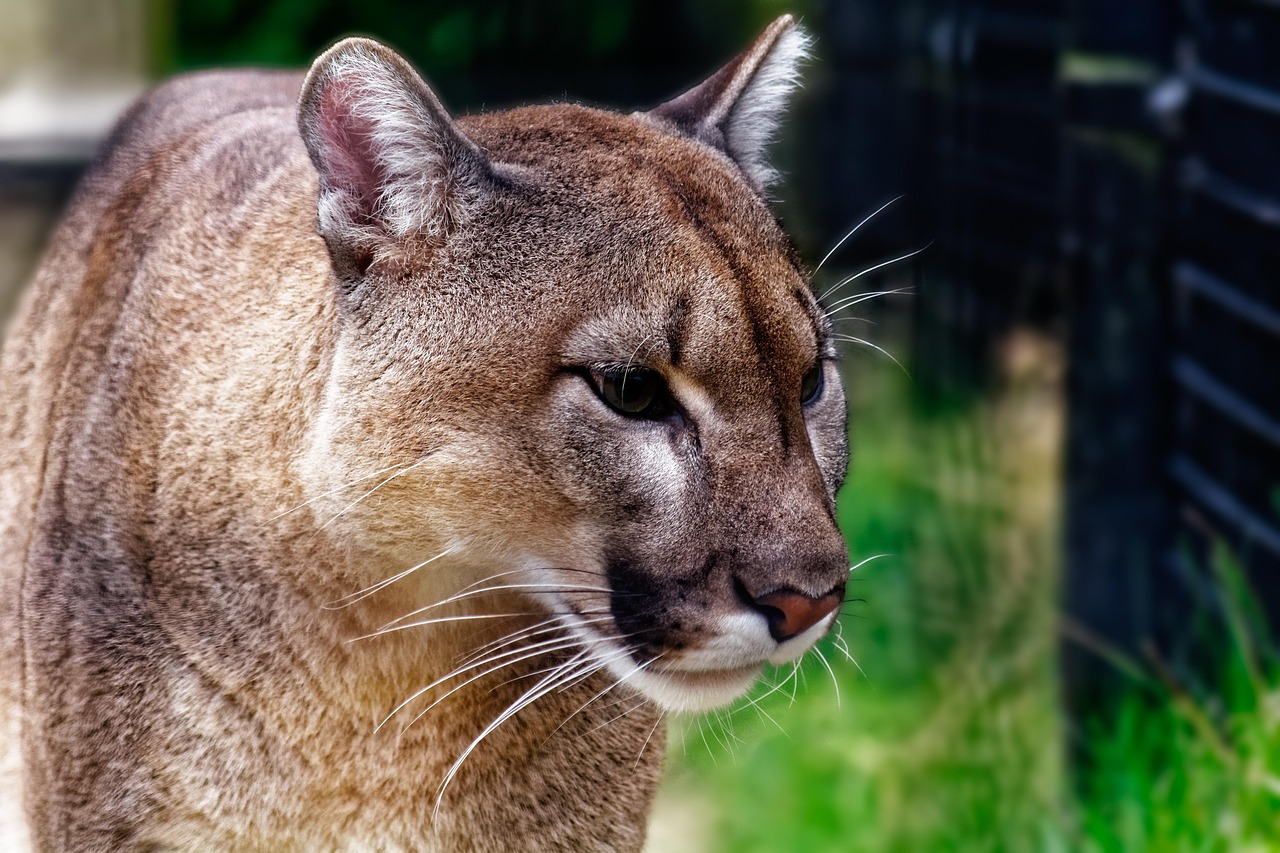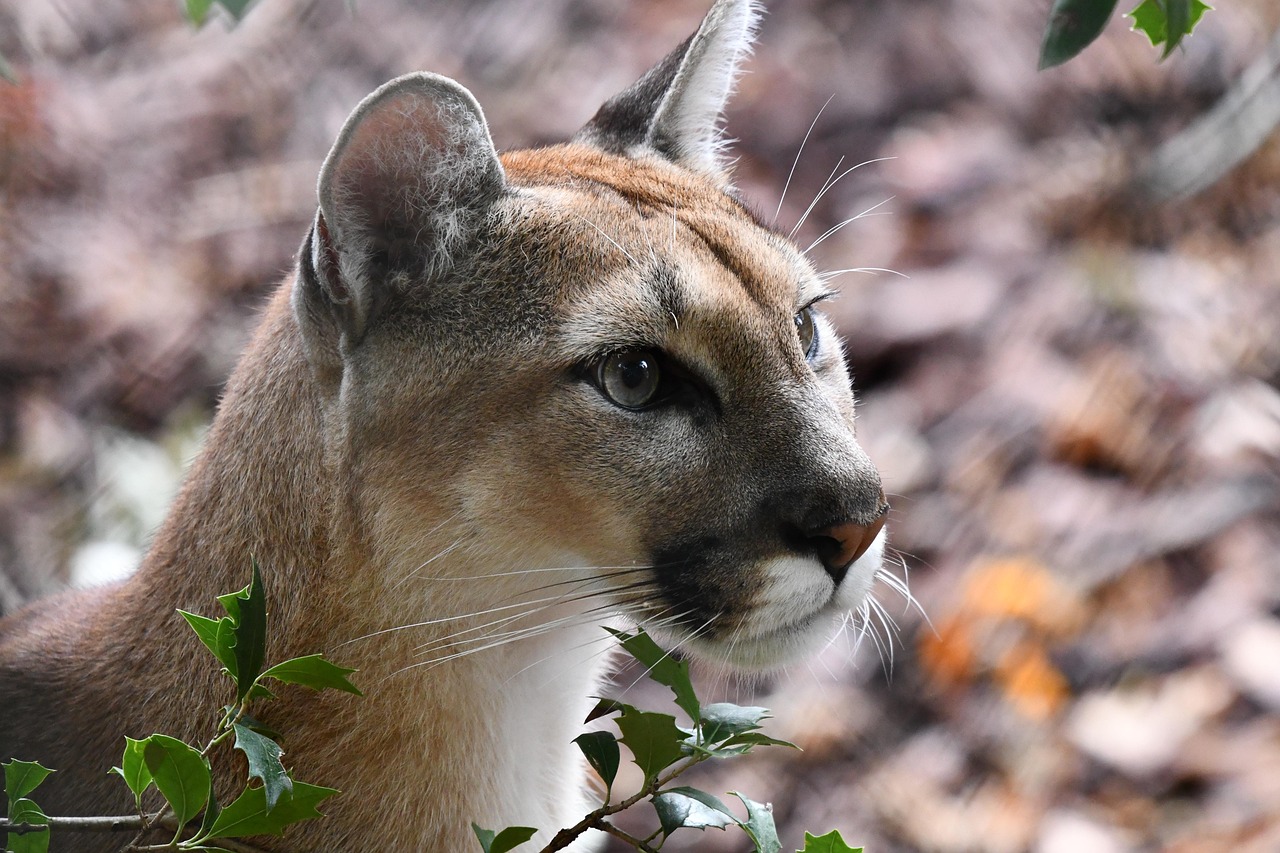Living in Los Angeles means sharing your space with some truly remarkable wildlife. The sprawling metropolis, with its over 13 million residents in the metropolitan area, holds the unique distinction of being the only megacity in the world where mountain lions roam alongside humans. These powerful cats, also called cougars or pumas, navigate the urban landscape with surprising grace, sometimes bringing them directly into residential areas.
You might think a puma encounter in your backyard sounds like something out of a movie. However, sightings are becoming more common as urban development continues to fragment natural habitats. Just like the famous P-22, who crossed two major freeways to make Griffith Park his home for over a decade, these adaptable predators are learning to coexist in our concrete jungle.
Stay Calm and Assess the Situation

The moment you spot a puma in your backyard, your first instinct might be panic. Take a deep breath instead. Humans are not lion prey. Lions rarely attack people, and it’s extremely rare for someone to be killed by a mountain lion. Statistically speaking, a person is 1,000 times more likely to be struck by lightning than attacked by a mountain lion.
Most backyard encounters involve pumas simply passing through your property. If you do happen to see a mountain lion pass through, such as on your doorbell camera, consider yourself lucky. Unless there are repeated sightings, this should not be cause for concern. Remember, these cats prefer to avoid humans whenever possible.
Mountain lion territories can encompass thousands of human properties, but the lion will avoid us as much as possible. The puma in your yard is likely just traveling between hunting grounds or searching for water. Think of it as an unexpected wildlife viewing opportunity rather than an immediate threat.
Never Run or Turn Your Back

If you find yourself face-to-face with a puma, resist every urge to run. Do not run from a lion. Running may stimulate a mountain lion’s instinct to chase. These cats are hardwired to pursue fleeing prey, and your panicked sprint could trigger that predatory response.
Instead, stand and face the animal. Make eye contact. This might feel counterintuitive, but direct eye contact shows the puma that you’re not prey. Prey animals typically avoid eye contact with predators, so your steady gaze sends a clear message that you’re not on the menu.
Keep your movements slow and deliberate. Keep eye contact and back away slowly, without running – an act that might trigger a mountain lion’s pursuit instinct. If you need to move, do so gradually while maintaining visual contact with the animal. This shows respect for the puma’s space while demonstrating that you’re not afraid.
Make Yourself Appear Large and Intimidating

Do all you can to appear larger. Raise your arms. Open your jacket if you are wearing one. Think of how a cat arches its back when threatened. You’re doing something similar by expanding your silhouette. Lions do not want to attack anything that looks big enough to hurt them, so raise your arms, spread your jacket, appear large, stand close to people.
Whatever you do, avoid crouching or bending over. Do not crouch down or bend over. A human standing up is just not the right shape for a lion’s prey. Conversely, a person squatting or bending over resembles a four-legged prey animal. Even if you need to pick up a small child, do it without bending.
If you’re with others, group together to appear as one large entity. Multiple people standing close together create an imposing presence that even a confident puma will think twice about approaching. Your goal is to look like something that could potentially harm the mountain lion, not something it could easily overpower.
Make Noise and Use Your Voice

Talk to it loudly; lions typically avoid the sound of humans. Your voice is one of your most effective tools in this situation. Speak in a firm, loud tone. You don’t need to scream, but your voice should carry authority and confidence.
Wave your arms slowly and speak firmly in a loud voice. The combination of movement and sound reinforces that you’re a human, not prey. Some experts suggest clapping your hands or banging objects together to create additional noise.
Avoid high-pitched sounds that might resemble distressed prey animals. Keep your voice deep and commanding. The idea is to convince the mountain lion that you are not prey and that you may be a danger to it. Think confident authority figure, not frightened victim.
Throw Objects and Create Distractions

If the puma doesn’t immediately retreat, escalate your defensive actions. Throw stones, branches, or whatever you can reach without crouching or turning your back. Act aggressively, looking large, waving your arms, shouting, throwing stones or branches. Your goal is to convince the animal that you’re more trouble than you’re worth.
Look around for anything you can use as projectiles while maintaining eye contact. Garden tools, outdoor furniture cushions, or even shoes can serve as effective deterrents. The key is to create enough commotion to make the puma reconsider its presence in your space.
Remember, you’re not trying to seriously injure the animal. You’re simply making yourself appear dangerous and unpredictable. Most pumas will retreat when faced with a determined, noisy human who refuses to act like prey.
Protect Children and Pets Immediately

Observations of captured wild mountain lions reveal that the animals seem especially drawn to children. If you have small children with you, their safety becomes your top priority. If you have small children with you, pick them up if possible so that they don’t panic and run. Although it may be awkward, pick them up without bending over or turning away from the mountain lion.
Children’s natural instincts to run and hide make them particularly vulnerable to puma attacks. Gather and protect your children. Keep them close and calm. Explain in simple terms that they need to stay quiet and still while you handle the situation.
Pets are also at high risk during puma encounters. Even if you have a fenced backyard or well-trained pets, it is best to never leave them outside unattended. If you can’t leave them inside, consider using a secure dog run, and bring them in at night. During an encounter, get pets indoors immediately if possible. Their movement and sounds can trigger the puma’s hunting instincts.
Know When and How to Report the Sighting

After the encounter, you’ll need to decide whether to report it to authorities. A mountain lion sighting is not necessarily an emergency. If you feel that there is a safety emergency, you can contact LA Animal Services or call 311 for guidance. However, not every sighting requires immediate intervention.
Most state wildlife agencies do not consider the mere presence of a mountain lion in an urban area to be a threat, as long as it does not linger. Single sightings of pumas passing through neighborhoods are considered normal behavior. These cats have territories that can encompass thousands of residential properties.
You should definitely report encounters where the puma showed aggressive behavior, appeared injured or sick, or lingered in the area for extended periods. Please report all mountain lion sightings to a park ranger. Documentation helps wildlife officials track movement patterns and identify potential problem animals before situations escalate.
The reality of living in Los Angeles means accepting that you share this space with incredible wildlife. Puma encounters in backyards, while startling, are actually a testament to the remarkable adaptability of these magnificent cats. By staying calm, making smart decisions, and respecting these powerful predators, you can navigate such encounters safely while appreciating the unique privilege of witnessing urban wildlife in action. What would you have guessed about your chances of such an encounter before reading this?






